Photo: Victor Boyko/Getty Images
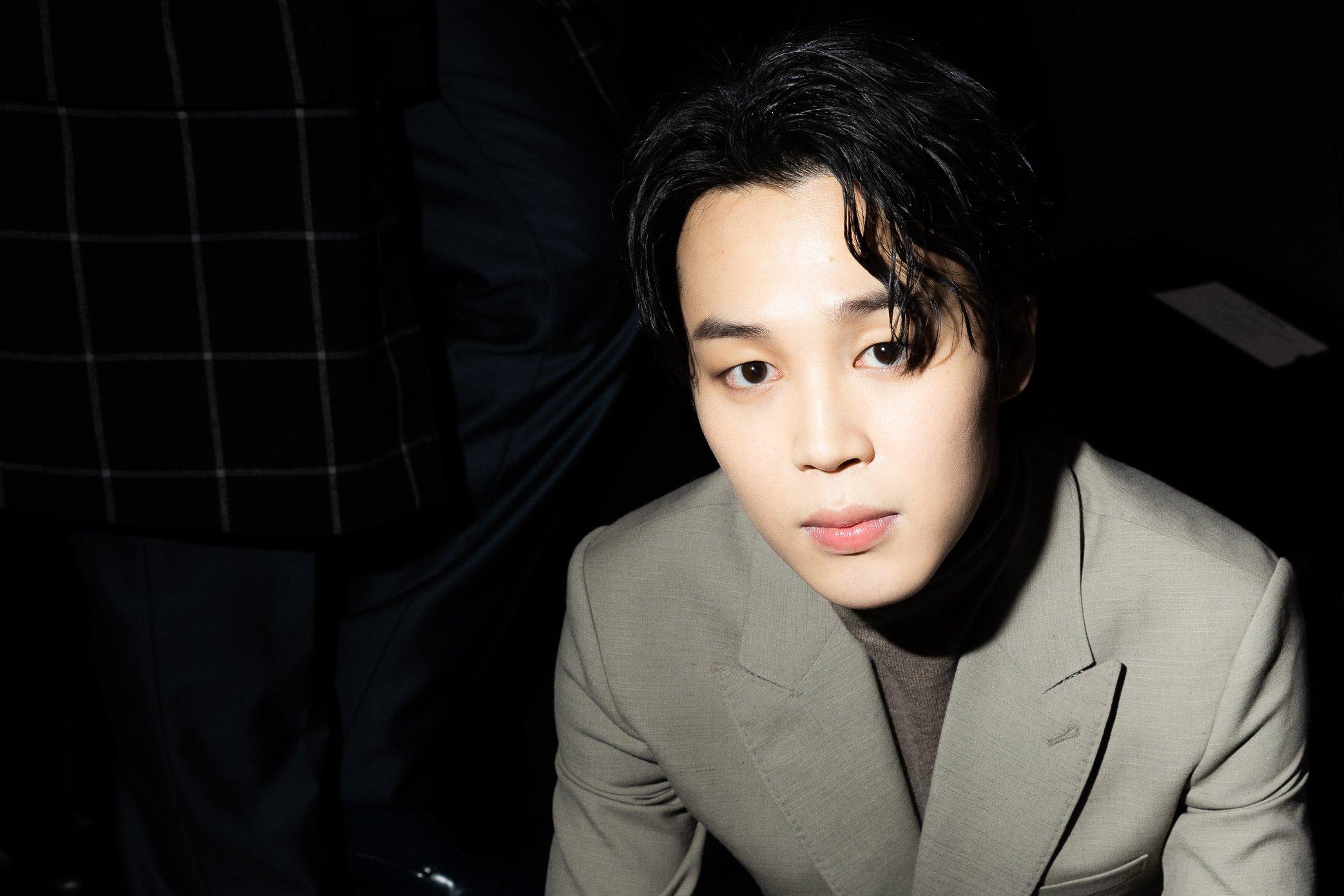
list
5 Takeaways From Jimin's Debut EP, 'FACE'
With no features and a hand in every aspect of the project, Jimin's first solo EP proves that the BTS star is a visionary in his own right.
For the past year, BTS fans have been getting a taste of what each member has to offer musically as the group has been on hiatus. And now, it's Jimin's turn.
Jimin's debut EP, FACE, arrived on March 24. The 6-song EP spans genres sonically, and is lyrically both intense and delicate — much like Jimin himself — detailing his sincere feelings from the pandemic. FACE doesn't just tell Jimin's unique story, but it also has personal touches in every way — he had a hand in everything from songwriting to conceptualizing music videos, showcasing his prowess as a solo star.
Jimin's lead-up to FACE has been feeding the fans at every turn. After collaborating with one of his idols, Big Bang member Taeyang, on "Vibe" in January, and dropping songs once only available on Soundcloud and Youtube, he officially kicked off the FACE chapter with "Set Me Free pt. 2" a week before the EP's release. With the full project now out, it's clear those songs were only a glimpse of what Jimin is truly capable of as a solo act.
Below, take a look at 5 takeaways from Jimin's highly anticipated debut FACE.
Jimin Was Partially Inspired By Film
For the main track "Like Crazy," Jimin took inspiration from one of his favorite films of the same name. Released in 2011, the film is a romantic drama about a couple from different places falling madly in love in college. They're separated by distance because of visa issues, but consistently find their way back to each other.
Much like the movie, the lyrics of the song touch on the pain of losing oneself. The music video visualizes this storytelling with hazy expressions and visually stimulating scenes.
He Isn't Afraid To Experiment
While "Like Crazy" is a danceable synth-pop record — similar to that of Jimin's BTS roots — the rest of the EP explores several different sounds. "Face Off" is has a trap-soul feel; "Interlude:Dive" is a trance-like transitional track; "Set Me Free pt. 2" has a strong hip-hop beat; and "Alone" is a ballad laced with R&B.
To close out the project, there's an English version of "Like Crazy" that demonstrates Jimin's versatility while also appealing to his global audience. Overall, the EP allows listeners to feel both familiar and new sounds from the singer, ultimately cementing his ability to entrance an audience no matter the tune.
Dance Adds To The Storytelling
As one of the main dancers of BTS, and a master of contemporary dance, it's only natural that Jimin's solo music would be grounded in movement. The music videos for "Like Crazy" and "Set Me Free pt. 2" are very different, but both relate to dance: the former captures a vibe at a club, while the latter focuses on elaborate dance numbers.
There Are Hidden Gems
Though the EP is technically only six songs, the physical version has an additional "hidden" track called "Letter." The song provides an intimacy that stands out from the other FACE tracks, capturing Jimin in his best form.
The lyrics are poignant and vulnerable, as Jimin pleads for someone to stay ("Baby, don't leave/ Just stay by my side, yeah") The biggest surprise, though? Fellow BTS member Jungkook contributes vocals to harmonize with Jimin.
Jungkook isn't the only BTS bandmate to play a role in FACE, either: Group leader RM co-wrote two tracks, "Face Off" and "Like Crazy."
"Interlude: Dive" also includes a BTS Easter egg, as Jimin included his intro from the group's last concert before their hiatus in Busan, South Korea. Seeing as Busan is also his hometown, it's clear he wanted to pay homage to his roots in more ways than one.
It's An Honest Reflection Of Jimin's Thoughts
Though he may seem delicate at first glance, Jimin demonstrates his unpredictability and willingness to take risks on FACE. He exposes emotions that may be tough to divulge in relatable ways, while also creating music that simply sounds good.
Challenging himself with intense choreography, rapping and bold conceptual choices, Jimin's first solo project proves he's a visionary in his own right. FACE offers an impressive introduction to Jimin's abilities as a solo performer — and a promising one at that.
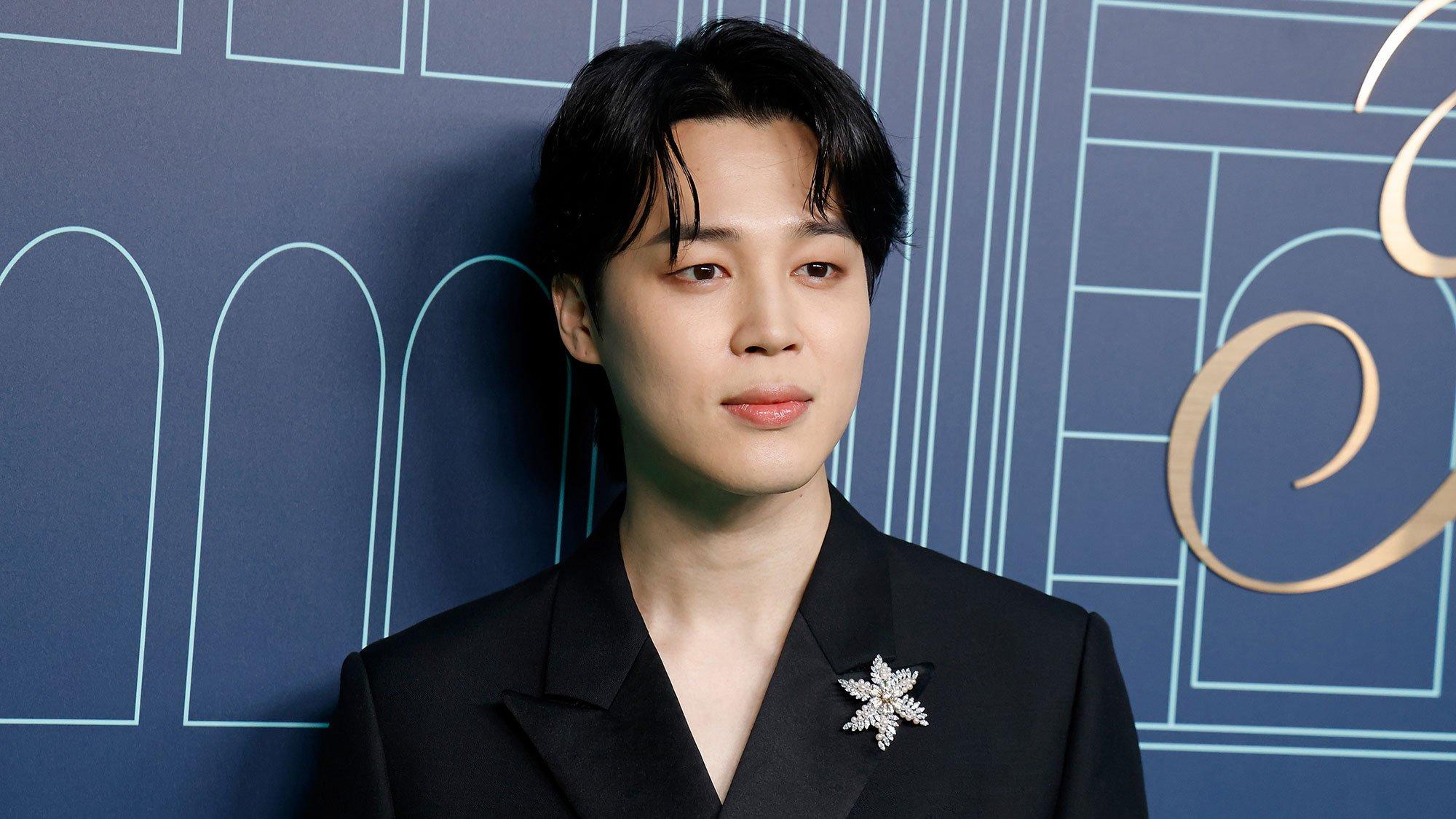
Photo: Taylor Hill/Getty Images
list
5 Takeaways from BTS Jimin's New Album, 'MUSE': A Bold Exploration Of Love And Inspiration
Jimin's second solo project, 'MUSE,' showcases his artistic growth and versatility, featuring a blend of nostalgic sounds, personal reflections, and standout collaborations.
K-pop juggernauts BTS are still on hiatus due to military enlistments, except for Jin, who was discharged last month. Yet, all members remain booked and busy in their solo endeavors.
Documentaries, travel shows, special singles — you name it, they carefully prepared it before starting their duties. And after new records from j-hope (HOPE on the Street) and RM (Right Place, Wrong Person) this year, the next in line is Jimin, who dropped MUSE today.
The album comes almost a year and a half after his debut EP, FACE, which placed Jimin as the first South Korean soloist to top Billboard's Hot 100 chart. In it, the Busan-born star proved his versatility and prowess standing on his own, captivating audiences old and new with his sensitive charisma.
In MUSE, Jimin introduces a new facet of his musical identity: bolder and more confident, but still a big softie at heart. To celebrate the beginning of a new era — and to ease the wait until his discharge next year — here are five key takeaways from Jimin's latest release, MUSE.
It's Another Jimin-Led Production
FACE was a proper introduction to Jimin's artistic vision, with him contributing to every aspect of the project and co-writing all of its tracks, minus the instrumental "Interlude: Dive."
Now, he takes it up a notch for MUSE, showcasing his growth by co-writing six out of seven tracks, and co-producing two of them: "Rebirth" and "Interlude: Showtime." Once again, Jimin had a hand on all of the album's components, including its concept and visuals, and bore down another layer of his ever-evolving skills.
If FACE introduced us to a vulnerable and sometimes desperate Jimin, MUSE charges forward with main pop boy energy, tender but commanding, sweet but sassy. It works both as a gift to fans and a tool to get to know Jimin even deeper.
He’s Still In Search Of His Muse
"We never met, but she's all I see at night/ Never met but she's always on my mind/ Wanna give her the world/ And so much more/ Who is my heart waiting for?" Jimin sings in MUSE's track, "Who." As the lyrics suggest, MUSE's main theme is Jimin's journey to find the source of his inspiration — his muse.
The album's seven tracks are all interconnected by love and longing, with Jimin searching for the one but getting lost in the way, and back at it once more. Through this perspective, he continues his path of self-discovery. After looking at his own FACE in the mirror, who else does he see? Who else instigates him enough to make art?
A Stellar Team Backs Up The Effort
To write and produce MUSE, Jimin enlisted longtime collaborators Pdogg, Ghstloop, Evan, and Supreme Boi. They have also been working with BTS for years, and know just what Jimin wants and needs in his songs.
But to make this album even more special, Jimin also collaborated with a fresh crop of professionals. Lead single "Who" was co-written and co-produced by Jon Bellion, Pete Nappi, and Tenroc, while Ayo the Producer and Kofo co-signed the fan-dedicated "Closer Than This." OneRepublic's Ryan Tedder helped pen "Be Mine," and Tommy Brown has writing credits on "Rebirth" and "Smeraldo Garden Marching Band (feat. Loco)."
Aside from Korean rapper Loco, MUSE also features American actress and singer Sofia Carson on the smooth duet "Slow Dance." Together, these names assembled a cohesive, yet diverse LP, brimming with influences from several decades, genres, and countries at once.
The Smeraldo Flower Makes A Comeback
Back in 2017, when BTS was in their LOVE YOURSELF era, they also introduced to their lore a fictional blue flower named Smeraldo. Symbolizing "a truth that cannot be told," its legend was better explored in the track "The Truth Untold (Feat. Steve Aoki)," and offered important clues to understanding that era's messages.
However, as years passed, the Smeraldo flower was largely forgotten from BTS's new works — until MUSE. Here, Jimin brings back the blue flower as one of the albums' visual concepts, and as the main motif behind pre-release "Smeraldo Garden Marching Band (feat. Loco)."
According to a press statement, the track's lyrics "express the longing to confess and find love on behalf of those unable to articulate their feelings," hence the use of Smeraldo. As for its curious title — loosely inspired by The Beatles' 1967 album Sgt. Pepper's Lonely Hearts Club Band — it came first as a casual nickname between Jimin, Pdogg, Ghstloop, and Evan while they worked together on FACE, and eventually became real.
It’s Packed With Nostalgia
If you miss Justin Timberlake's Justified sounds and other early-2000s gems, MUSE is here to take you on a nostalgic trip. Inspired by pop, R&B and hip hop from that era, Jimin gave his latest album a vintage, cozy veneer.
These references are predominantly visible on "Who" and its delightful guitar strums, but "Slow Dance (feat. Sofia Carson)," for example, sounds like an updated version of Usher and Alicia Key's "My Boo," and "Be Mine" could be the 2020's lovechild of Santana's "Maria Maria" and Sean Paul's "I'm Still In Love With You."
Another strain of references can be seen in "Smeraldo Garden Marching Band (feat. Loco)," which extends The Beatles' inspiration to experimental samples and marching band percussion, and creates a quirky piece that strays away from any current trends. "Interlude: Showtime" drinks from the same source, featuring a circus brass and drum line that introduces us to the singularity of "Smeraldo Garden."
While infused with nostalgia, MUSE still appeals to today's tastes, and offers a seamless, polished listen. It stands as a testament to Jimin's artistic growth, and while he might not have found his muse yet — he is certainly a source of inspiration for many.
More BTS News
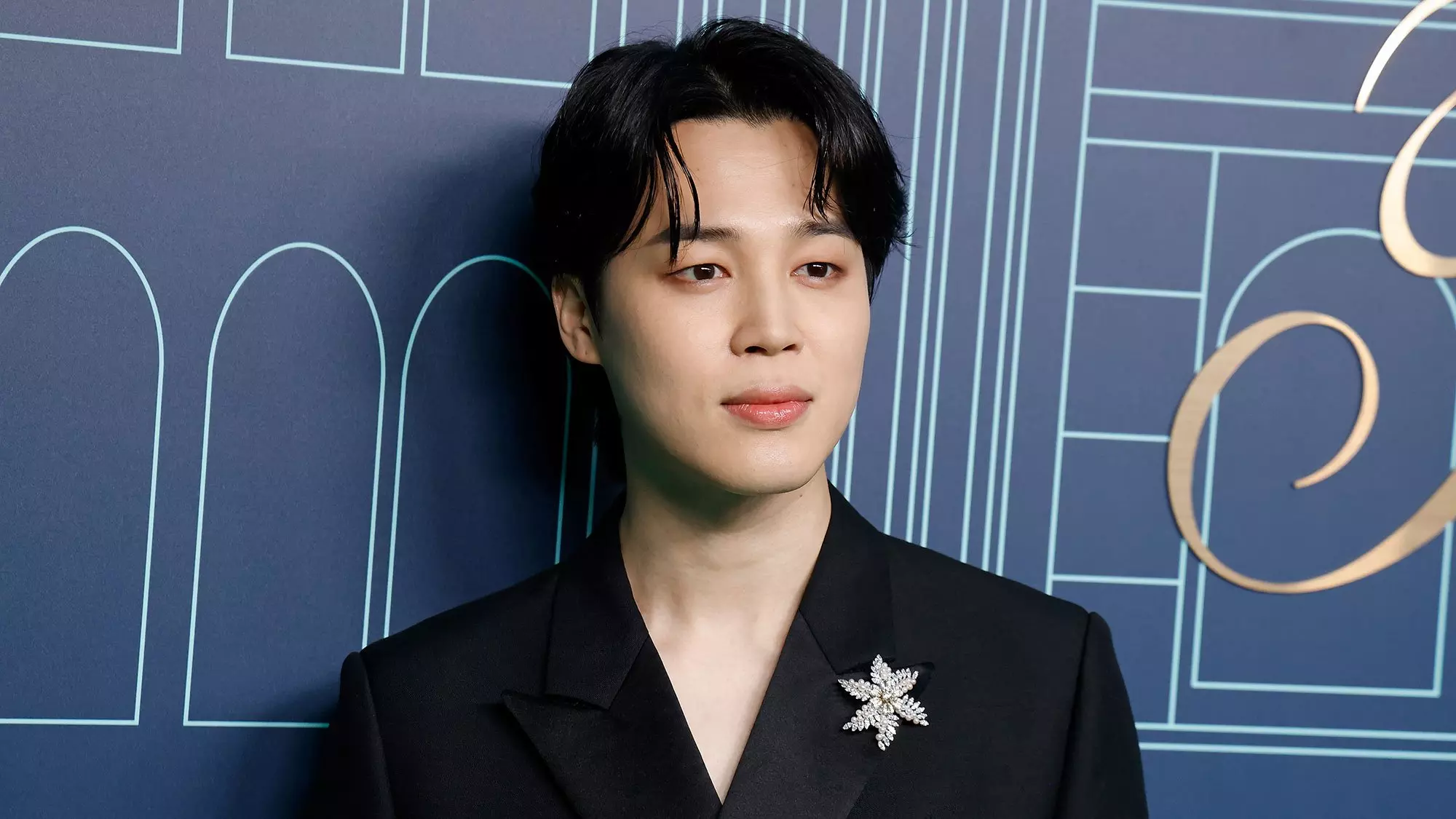
5 Takeaways from BTS Jimin's New Album, 'MUSE': A Bold Exploration Of Love And Inspiration
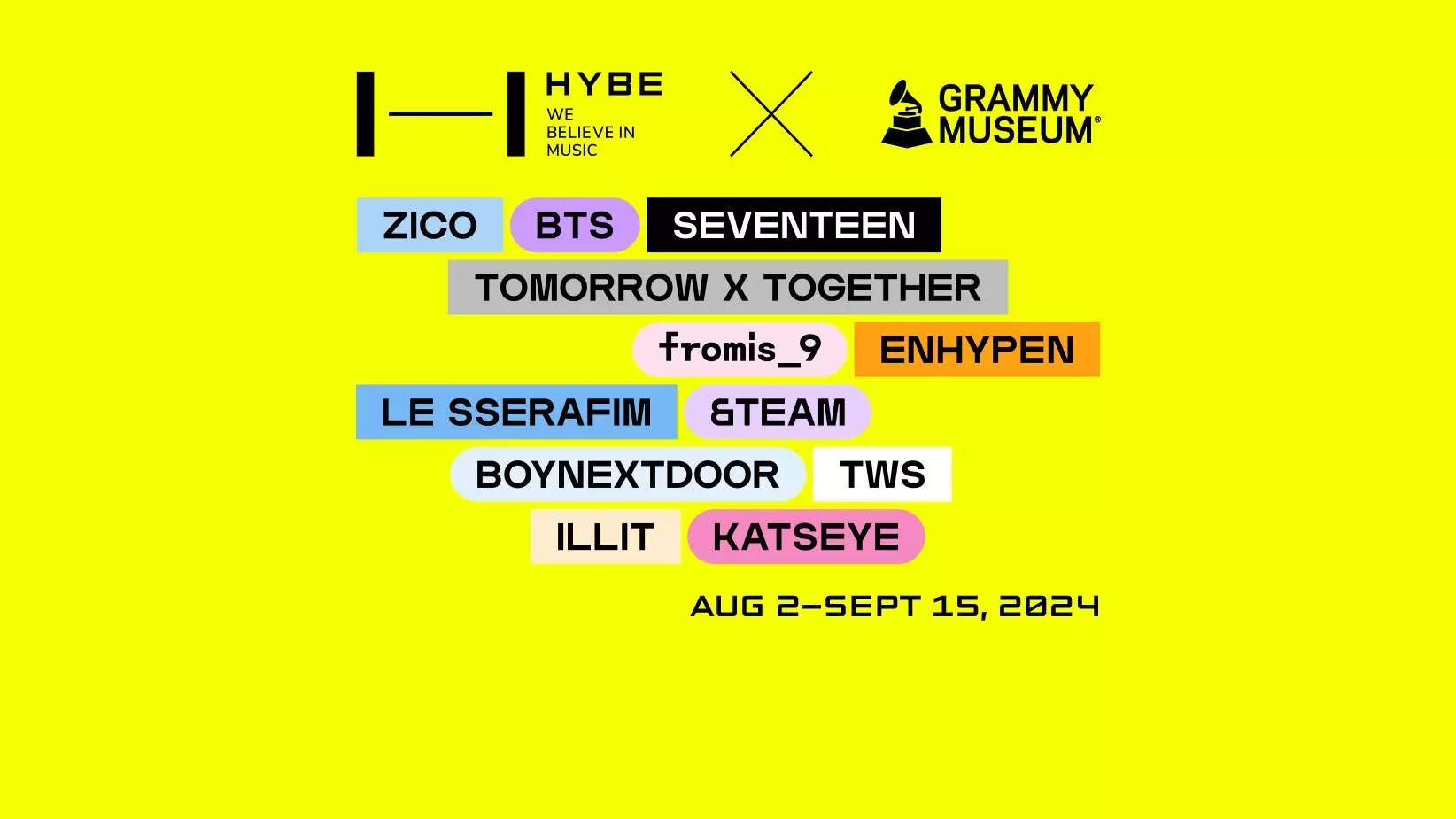
GRAMMY Museum Partners With HYBE For New K-Pop Exhibit 'HYBE: We Believe In Music' Opening Aug. 2
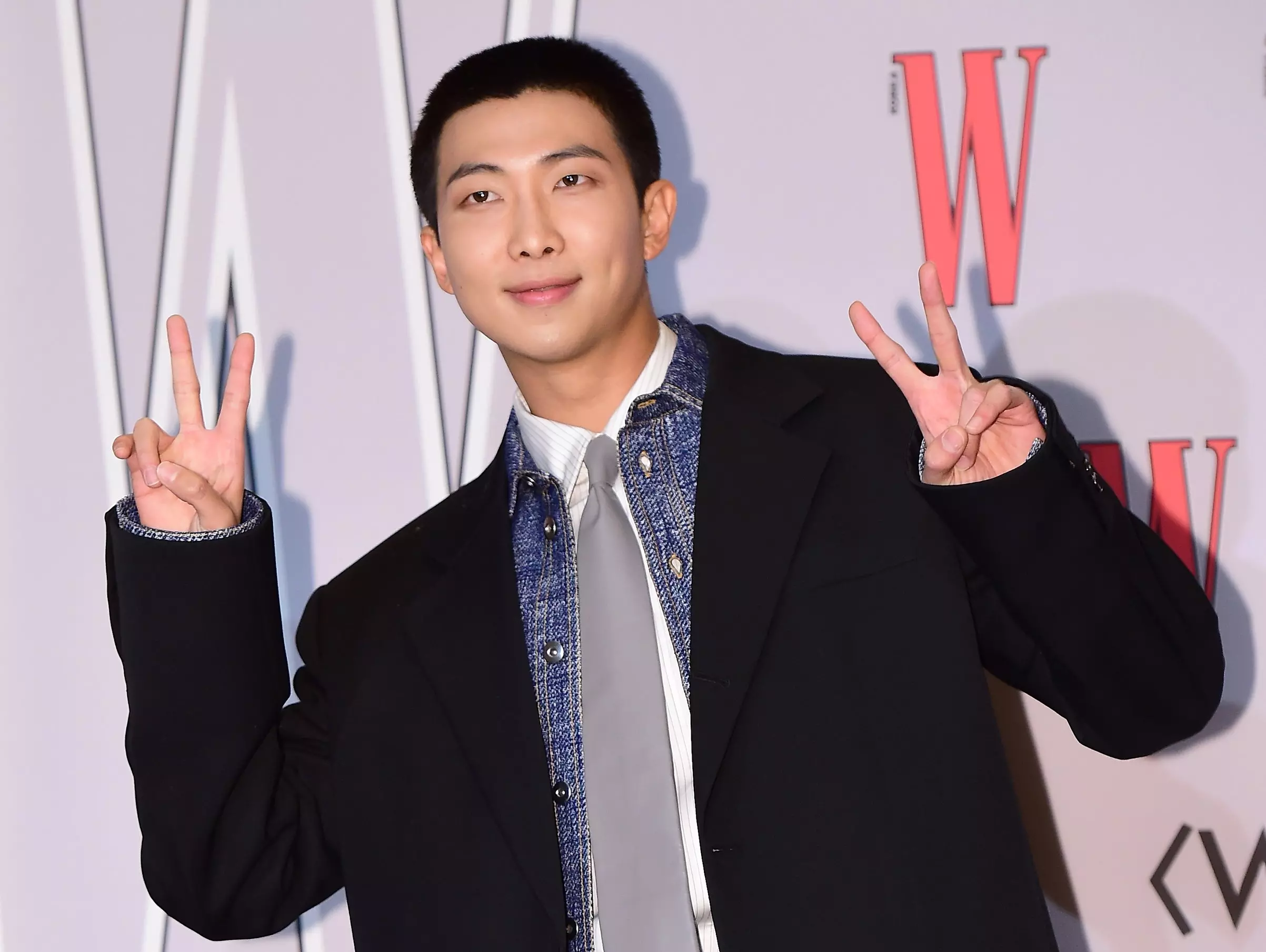
Stream RM's New Album 'Right Place, Wrong Person': See The Tracklist, "LOST!" Video & Special Guests
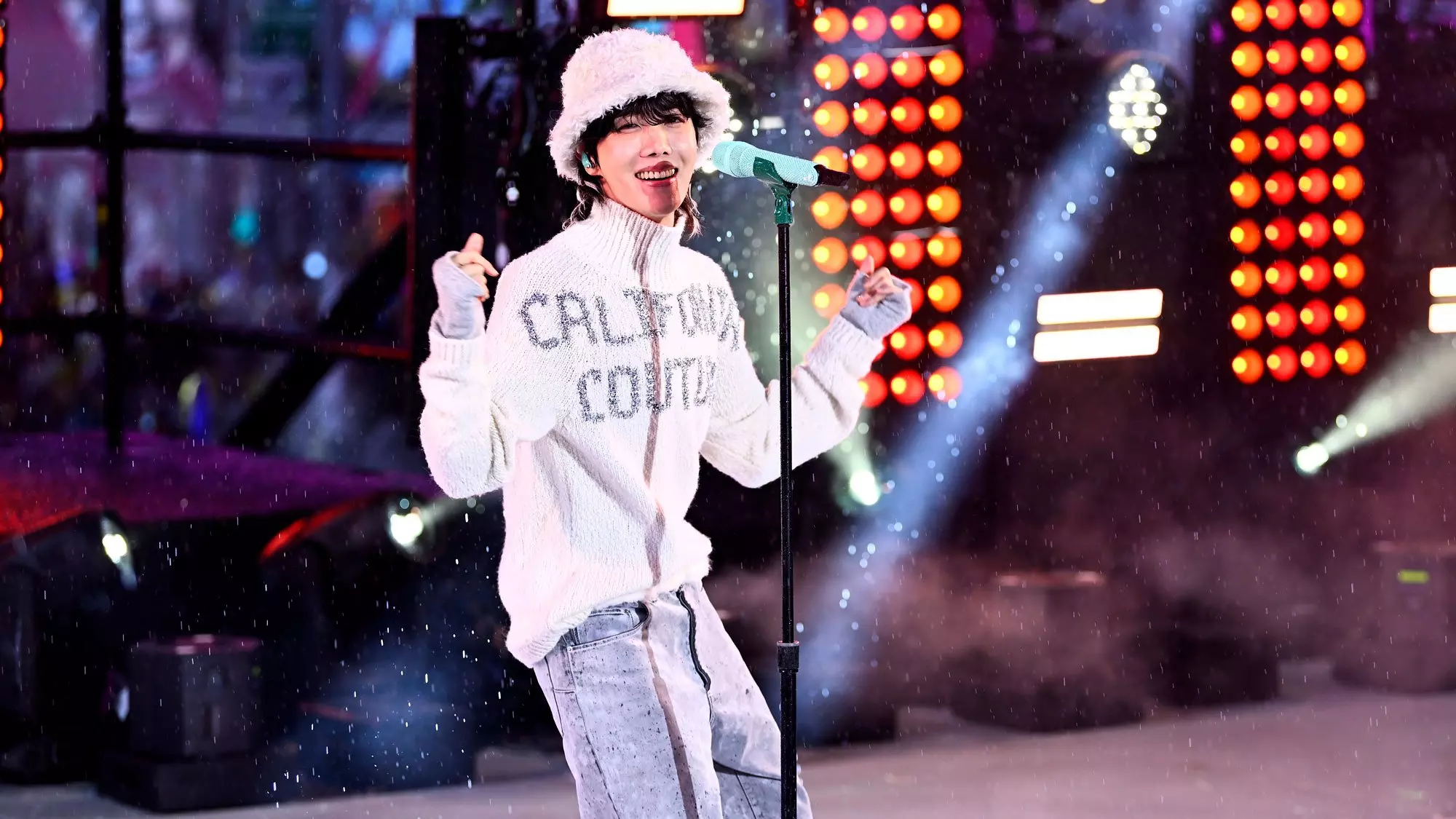
J-Hope's Road To 'Hope On The Street Vol.1,' From Falling Back In Love With Dance To Tying Together His Global Influences
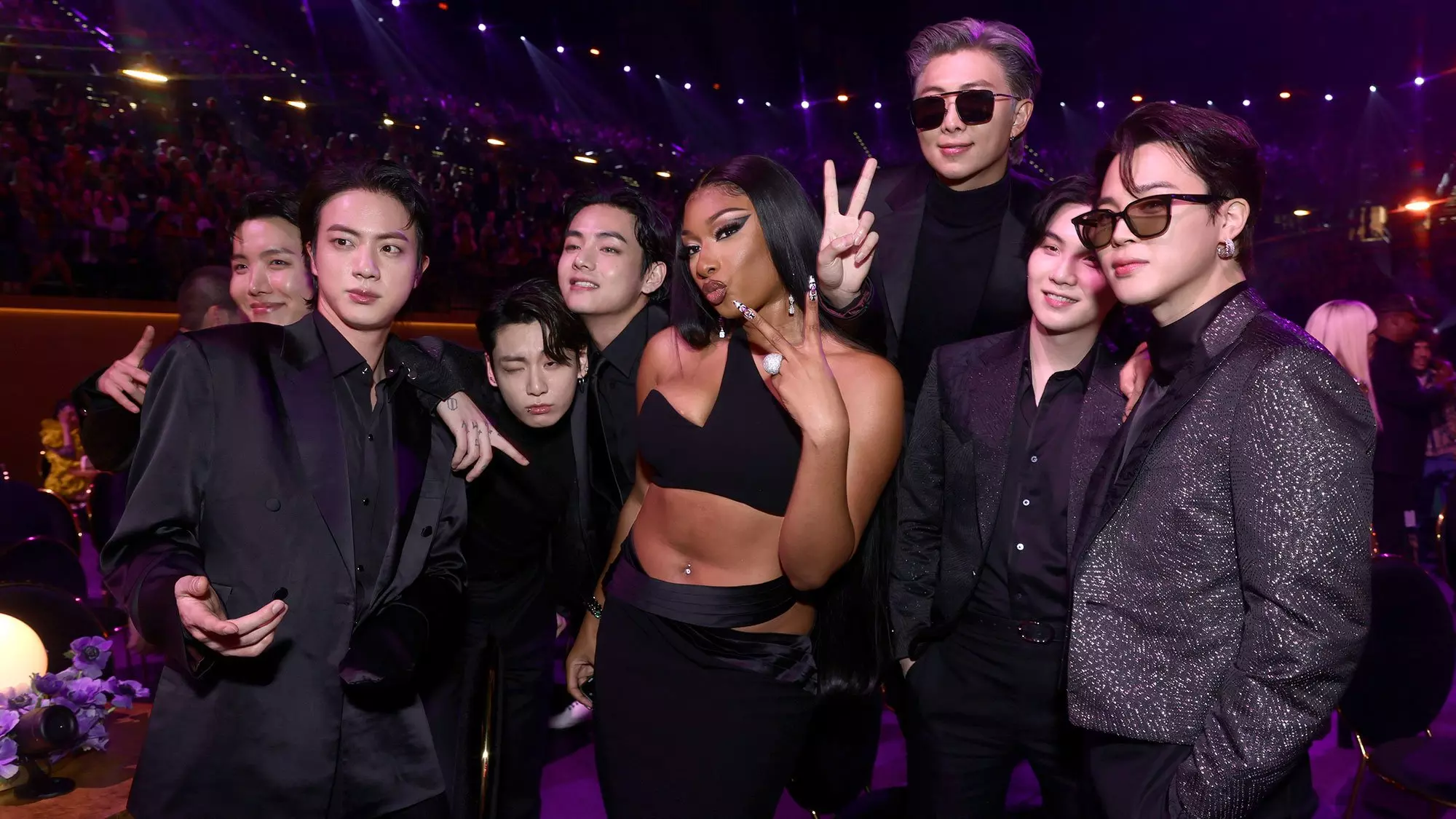
9 Essential K-Pop/Western Collabs: From BTS And Megan Thee Stallion, To IVE And Saweetie
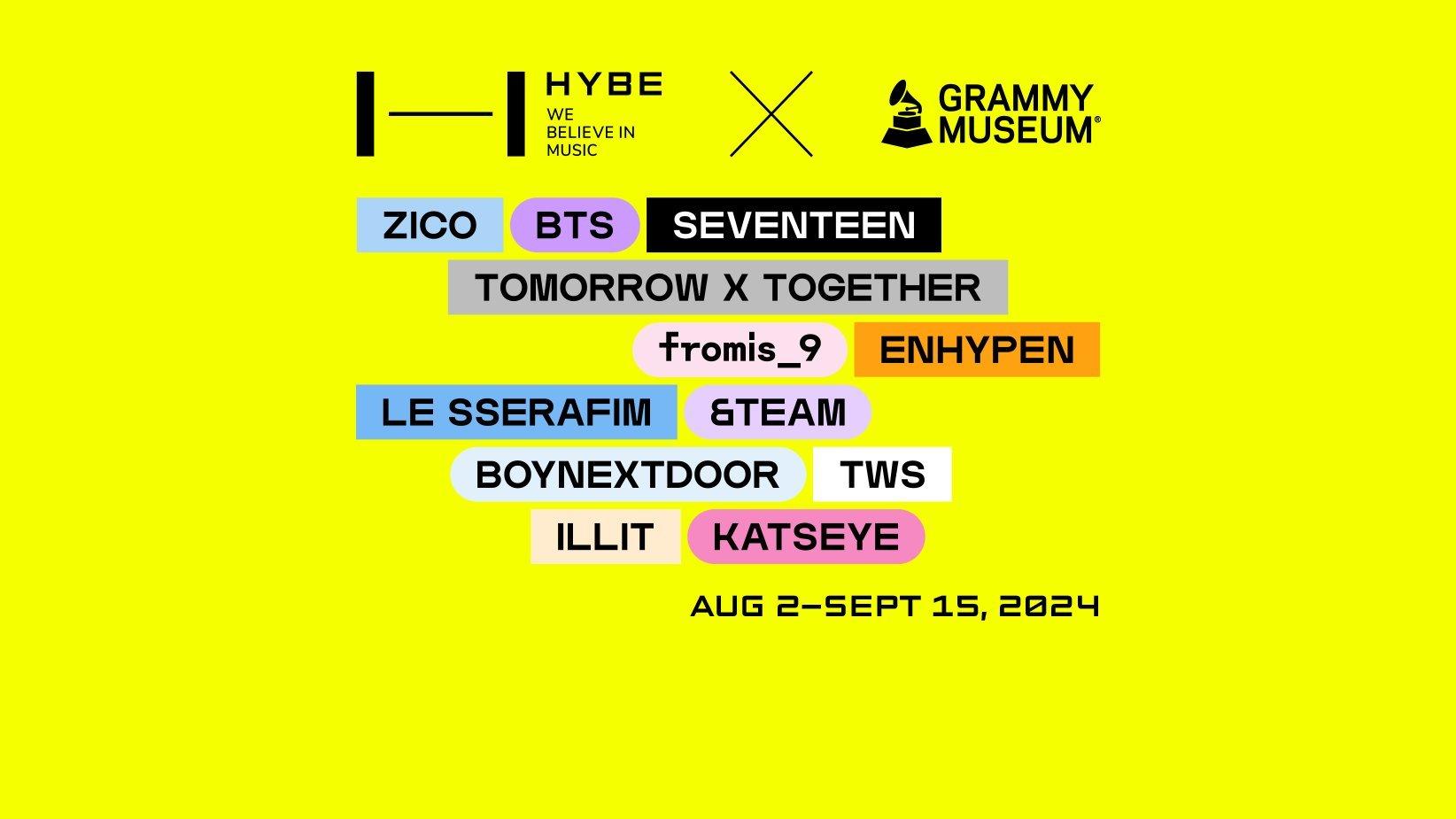
Graphic courtesy of the GRAMMY Museum
news
GRAMMY Museum Partners With HYBE For New K-Pop Exhibit 'HYBE: We Believe In Music' Opening Aug. 2
Running Aug. 2 through Sept. 15, the GRAMMY Museum exhibit showcases artifacts from superstar HYBE artists, including BTS, SEVENTEEN, TOMORROW X TOGETHER, ENHYPEN, LE SSERAFIM, and many more.
The GRAMMY Museum joins forces with HYBE to present its newest exhibit, HYBE: We Believe In Music, A GRAMMY Museum Exhibit. This interactive exhibit chronicles the history and impact of HYBE, and showcases its legacy of unparalleled innovation and creativity as a trend-setting global entertainment brand.
The exhibit opens on Aug. 2 in downtown Los Angeles and features spotlight moments with K-pop stars BTS, SEVENTEEN, TOMORROW X TOGETHER, ENHYPEN, LE SSERAFIM, and many more. "HYBE: We Believe In Music" runs through Sept.15. The exhibit will kick off on Aug. 1 with "Global Spin Live: TWS," a program featuring a moderated conversation with K-pop group TWS, followed by a performance.
The exhibit traces HYBE's evolution and influence by showcasing instantly recognizable artifacts from its roster of artists, creators, and fans. The displays notably feature original outfits worn in iconic music videos such as "Yet To Come (The Most Beautiful Moment)" by BTS, "MAESTRO" by SEVENTEEN, "Sugar Rush Ride" by TOMORROW X TOGETHER, "Sweet Venom" by ENHYPEN, and "EASY" by LE SSERAFIM. HYBE: We Believe In Music also boasts accessories and performance gear donned by ZICO, fromis_9, BOYNEXTDOOR, TWS, &TEAM, and ILLIT. The exhibit marks the first time these artifacts will be on display together in one location.
Other highlights include interactive sing-along and dance rooms, a dedicated Fan Section celebrating the endless support between HYBE artists and their fandoms, a Mono to Immersive room featuring BTS's 2022 GRAMMYs performance of "Butter," and a Photoism Booth that allows visitors to pose alongside their favorite K-pop artists. The GRAMMY Museum exhibit will also feature exclusive video content with producers, artists, music videos, and more.
"HYBE and their artists represent the present and future of the global music landscape, and our goal with this exhibit is to deepen the appreciation and respect for its creators and performers," says Michael Sticka, President/CEO of the GRAMMY Museum. "HYBE has contributed to creating a playground of innovation that inspires fandoms that transcend age, gender, geography and beyond. The GRAMMY Museum is thrilled to provide a space where fans can express their love for K-pop and feel closer to their favorite idols."
Read more: 11 Rookie K-Pop Acts To Know In 2024: NCT Wish, RIIZE, Kiss Of Life & More
HYBE Chief Operating Officer Taeho Kim added, "Putting out an exhibition that captures HYBE's journey is a new experience for us. We're very excited about this partnership with GRAMMY Museum, and we look forward to welcoming music fans who visit the museum to enjoy and connect with our historical pieces."
The exhibit highlights the roots of HYBE's meteoric rise. In 2005, South Korean producer, composer, and songwriter Bang Si-Hyuk, known as "hitman" Bang, changed the trajectory of Korean pop music by launching the record label Big Hit Entertainment. He soon signed a talented 16-year-old rapper named RM, which became the first step in creating the label's groundbreaking boy band — BTS. With the group's global success, "hitman" Bang and Big Hit Entertainment became known as musical trailblazers and record industry innovators. Big Hit Entertainment has now evolved into HYBE, which only continues to break boundaries in music and beyond.
More K-Pop News
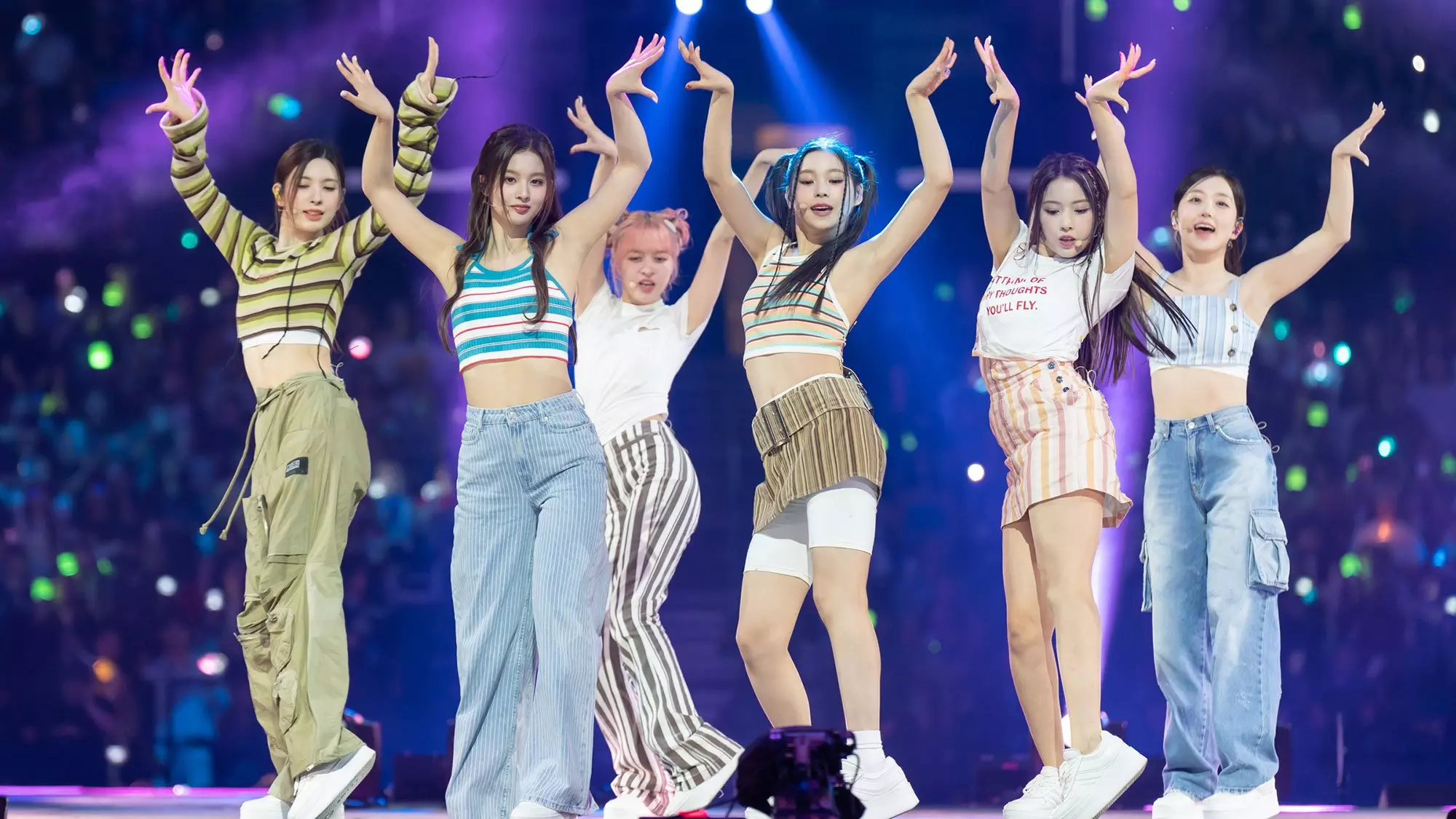
KCON L.A. 2024 Returns: Get Ready With This Playlist Featuring NCT 127, Zerobaseone, ENHYPEN, Zico & More
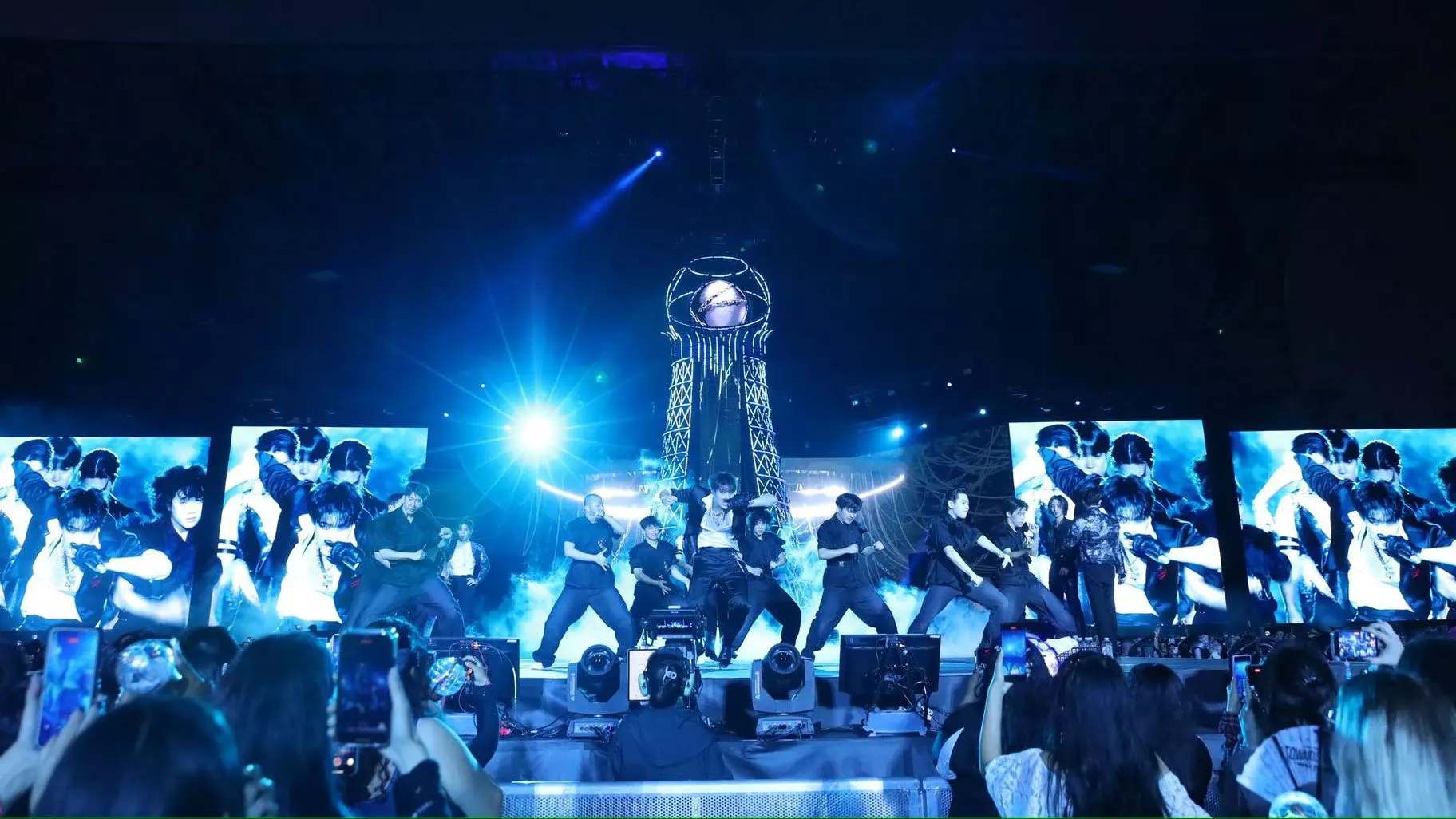
ATEEZ’s First U.S. Stadium Show Was A Triumph & Testament To Their Growth

5 Takeaways from BTS Jimin's New Album, 'MUSE': A Bold Exploration Of Love And Inspiration
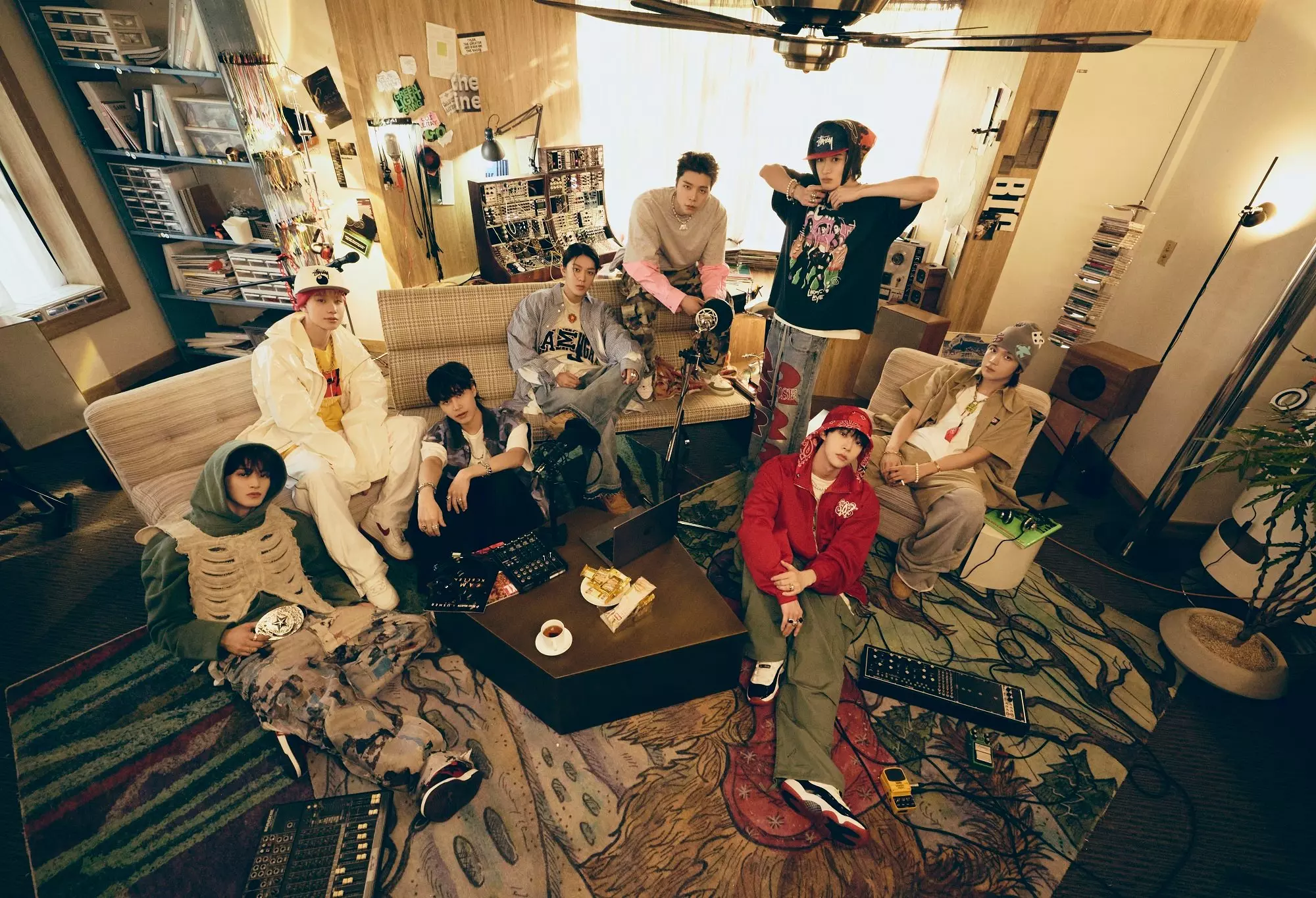
NCT 127 Essential Songs: 14 Tracks You Need To Know From The K-Pop Juggernauts
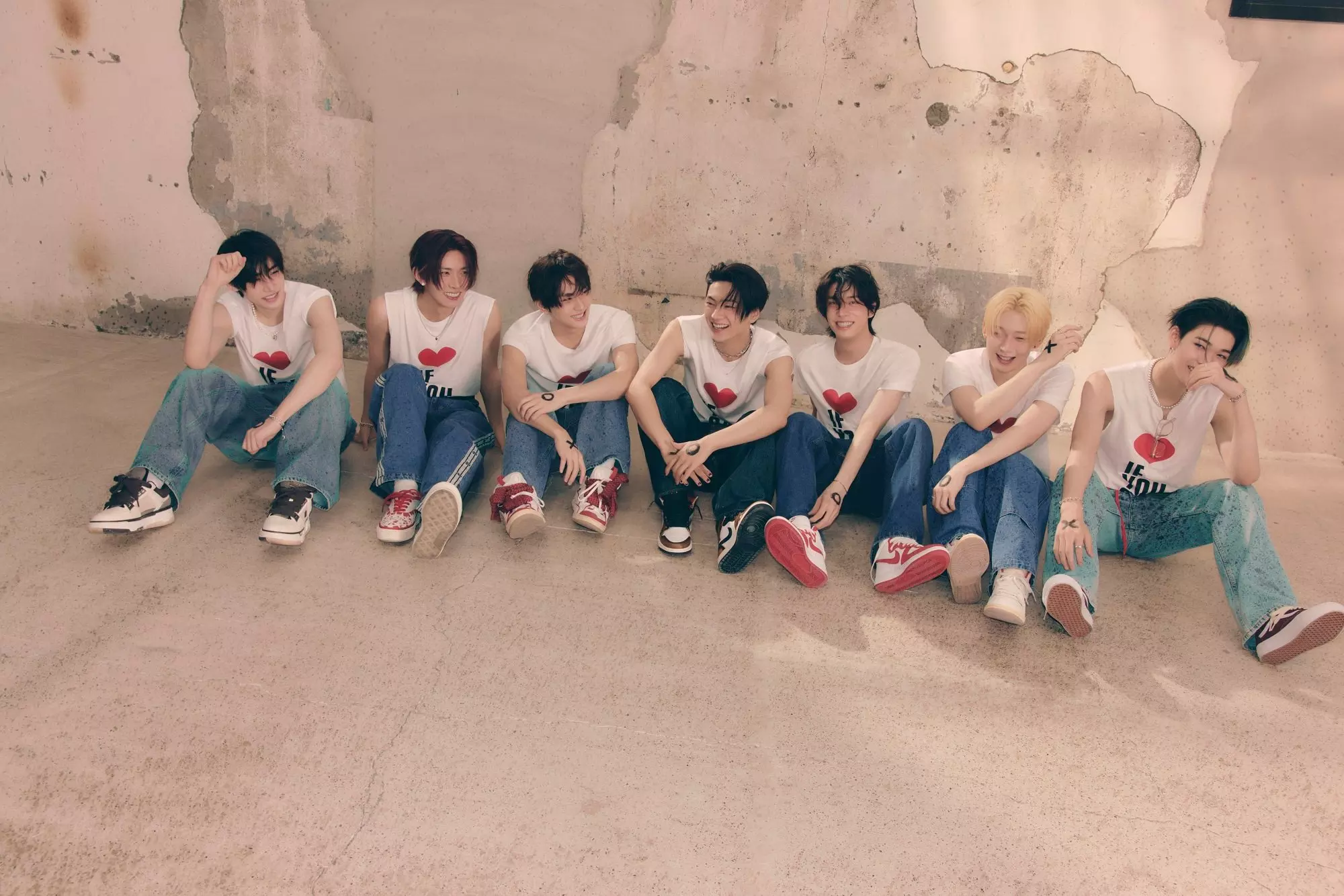
ENHYPEN And JVKE "Say Yes" To Cross-Cultural Collabs & Exploring New Genres
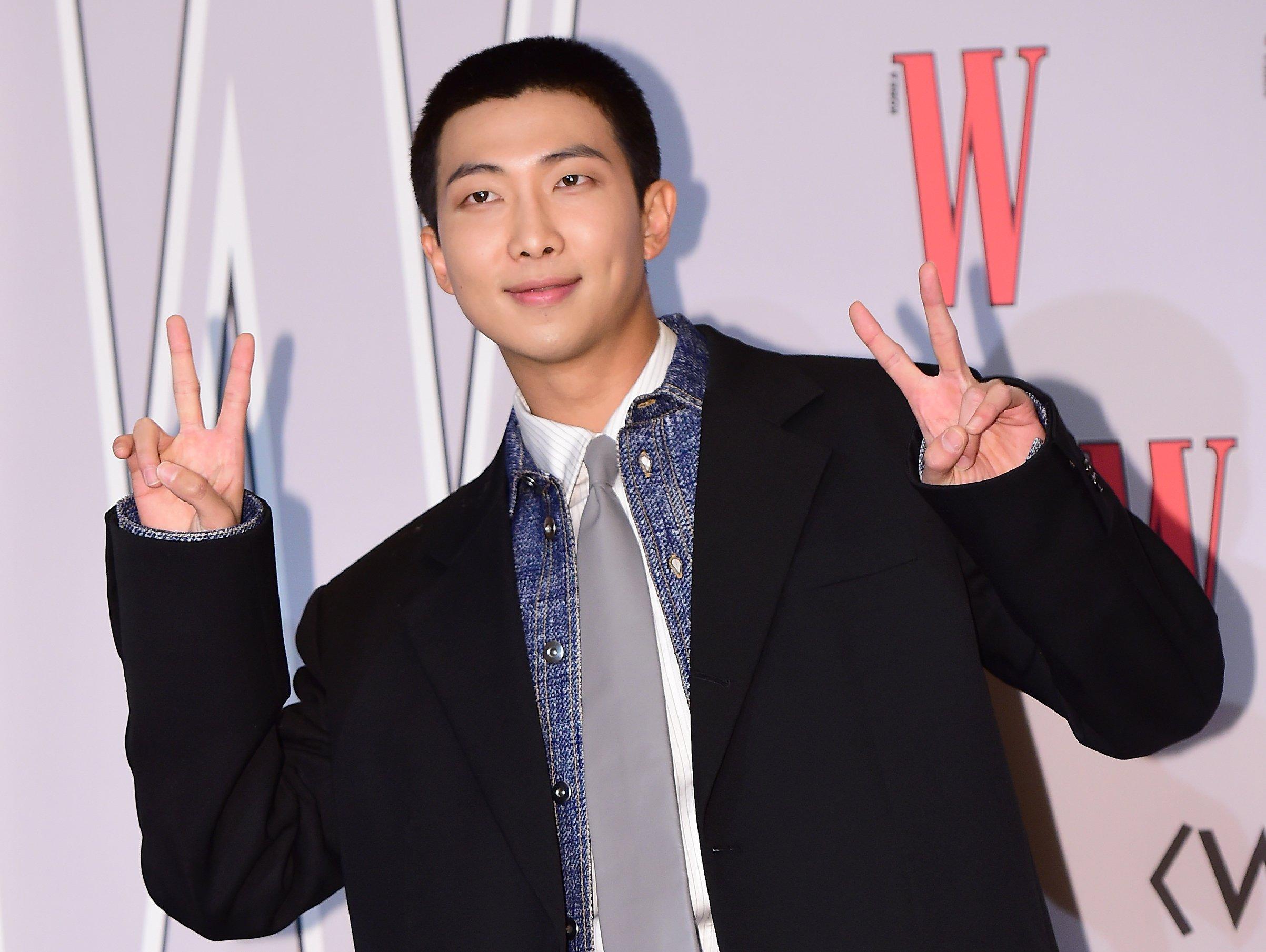
Photo: The Chosunilbo JNS/Imazins via Getty Images
news
Stream RM's New Album 'Right Place, Wrong Person': See The Tracklist, "LOST!" Video & Special Guests
The second solo album from BTS' RM further displays his knack for genre-bending experimentation, while also delving deeper into his vulnerable side. Listen to the new album here, and get to know the project's featured artists, tracklist and more.
As the world patiently awaits the return of BTS in full force, each member continues to deliver solo projects to show off their individual talents. And 18 months after his last album, RM is back.
With a discography that hops between pop, R&B, and hip-hop, RM returns to the spotlight with his second solo album, Right Place, Wrong Person. The project tells the relatable story of an individual who is a creature of habit, but slowly comes to find solace in foreign spaces.
Below, listen to RM's latest album, and discover more about how he's revealing a new side of his artistry with Right Place, Wrong Person.
The Tracklist
After RM's debut solo album, 2022's Indigo, had 10 tracks (including features from the likes of Erykah Badu, Anderson .Paak), he ups the tally with an 11-song tracklist this time around.
Here is the complete tracklist for Right Place, Wrong Person:
1. Right People, Wrong Place
2. Nuts
3. out of love
4. Domodachi (feat. Little Simz)
5. ? (Interlude)
6. Groin
7. Heaven
8. LOST!
9. Around the world in a day (feat. Moses Sumney)
10. ㅠㅠ (Credit Roll)
11. Come back to me
The Creative Visuals
Two weeks before the album dropped, he unveiled the music video for "Come Back to Me," the lead single from Right Place, Wrong Person. Directed by the critically acclaimed actor Lee Sung Jin, the music video narrates the tale of feeling like an outsider and yearning for a sense of belonging in unfamiliar surroundings.
Then, on the day Right Place, Wrong Person arrived, RM added to release-day excitement with another intriguing visual, this time for "LOST!" The five-minute clip sees RM as the star of "The Lost! Show," where he and a group endure an eerie whirlwind of scenarios they can't seem to get out of. It's equal parts dramatic and slapstick, and another clever display of RM's creative versatility.
Noteworthy Guests
The featured artists on Right Place, Wrong Person — British rapper Little Simz on "Domodachi" and art-pop artist Moses Sumney on "Around the world in a day" — underscore RM's ability to interlace his own musical style with artists from various genres.
The album also has some notable behind-the-scenes collaborators as well. Production credits include Kim Han-joo, keyboardist and vocalist from the South Korean rock band Silica Gel, on "LOST!" and GRAMMY-nominated jazz duo DOMi & JD Beck on "? (Interlude)."
On "Come back to me" — which RM initially debuted last August during a surprise performance at BTS bandmate Suga's encore concert in Seoul — he delves into the album's central theme of wanting to venture into unknown areas, but feeling the intense urge to stay with what's already known. The track was composed and arranged by OHHYUK from the South Korean indie-rock band Hyukoh, but also features credits from artists Kuo, JNKYRD, and San Yawn.
But no matter who RM is working with, his own talent and prowess as a creator always shines. Right Place, Wrong Person presents a diverse array of tracks marked by sheer vulnerability, honesty, and sensitivity — a masterful continuation of a remarkable solo journey.
K-Pop Summer 2024 Guide: ATEEZ, IU, TXT & More Live In Concert & On Tour
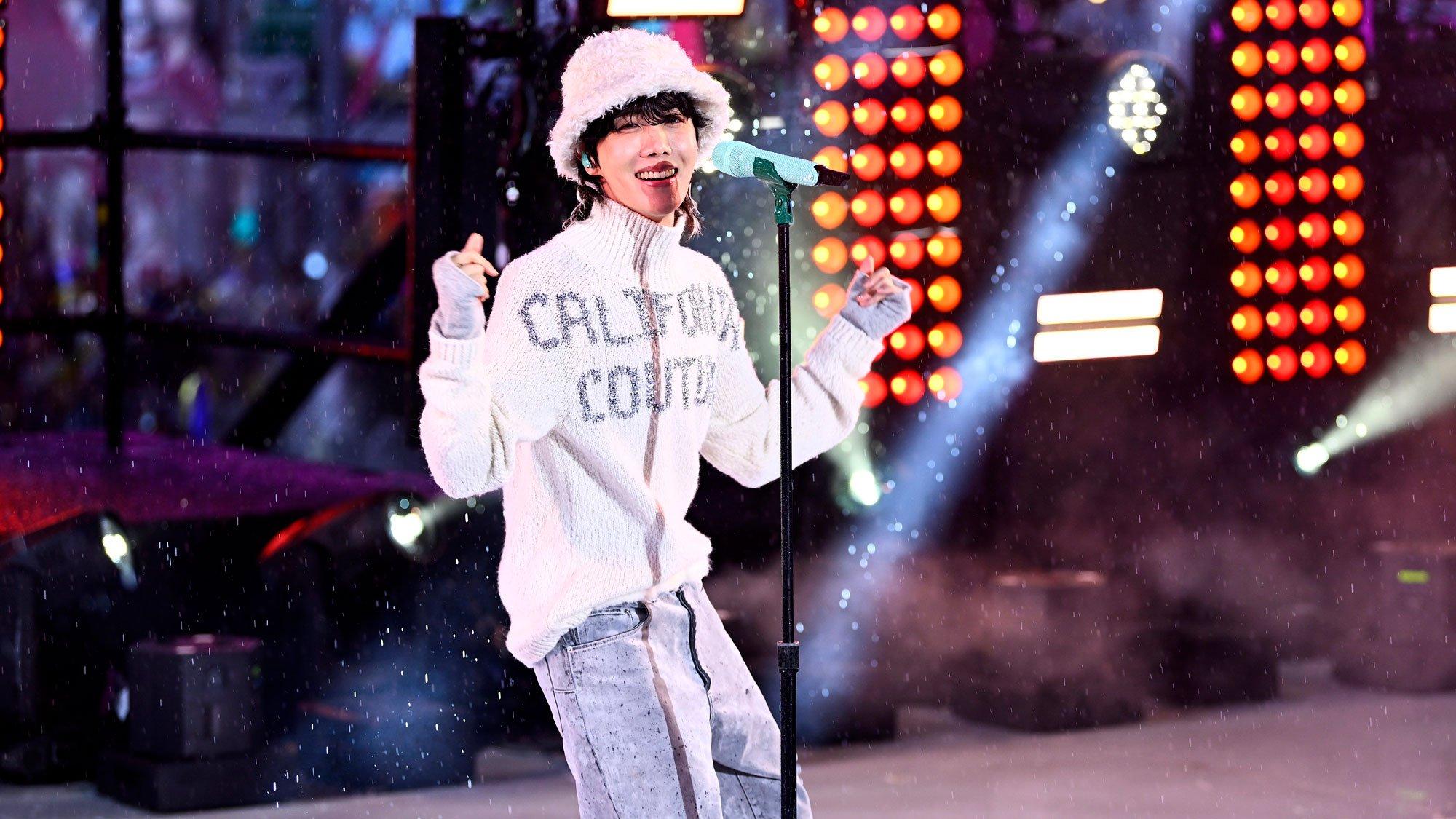
Photo: Roy Rochlin/Getty Images
feature
J-Hope's Road To 'Hope On The Street Vol.1,' From Falling Back In Love With Dance To Tying Together His Global Influences
After 11 years in BTS, j-hope revisits the passion that started it all: dancing. Ahead of his new docuseries and special album, 'Hope on the Street Vol.1,' discover the full-circle journey that brought him back to his roots.
"Just dance," j-hope commands on his 2018 BTS solo track.
For the international sensation, that's what it's always been about: expressing himself through movement. Now, 11 years after the launch of the seven-piece group, j-hope takes a U-turn to where it all began, before his K-pop idol days, street dancing between his hometown, Gwangju, and Seoul, South Korea.
Out March 29, j-hope's new special album, Hope on the Street Vol.1, is a musical ode to dancing that boasts a "vibrant collection of six tracks spanning a diverse array of sounds and moods that showcase j-hope's musical prowess and depth." Like j-hope's global perspective of dance, the EP expands borders and sounds, featuring appearances from HYBE labelmate HUH YUNJIN of LE SSERAFIM as well as American stars Nile Rodgers and Benny Blanco.
The mini-album will also be accompanied by a docuseries of the same name, premiering on Amazon Prime Video on March 28. According to a press statement, the six-part project will "highlight j-hope's story and love for dancing as he begins a new journey."
Ahead of Hope on the Street Vol.1's arrival, take a look at how j-hope's origins inspired the project — from his enrollment in a local dance academy to songwriting with J. Cole on their 2023 single, "on the street."
Finding Purpose In Dance
Long before becoming a global superstar, j-hope (born Jung Ho-seok) first discovered his love for dancing on the playground.
"The school I went to had a dance lesson for 30 minutes in the morning. They would play a dance video, and we would copy it as exercise," j-hope recalled in a 2013 interview for the BTS Japan Fanclub magazine. "My friends around me would praise me, saying, 'You're really good!'"
Eventually, those recess workouts turned into a passion. J-hope began practicing moves at home and freestyling at local talent shows. By the sixth grade, he told his parents he was serious about it, enrolling him in Gwangju's Joy Dance Academy.
While at the Academy, j-hope also joined the underground dance crew, NEURON, building a reputation under the name "Smile Hoya." Though he hasn't participated in the troupe since his pre-BTS days, he still recognizes it as one of the most influential parts of his career.
He'll even honor the crew with Hope on the Street, which includes a track called "NEURON," featuring Gaeko and yoonmirae. He will also return to Gwangju in the closing chapter of the docuseries.
It's not the first time j-hope shouted out Gwangju, either. His 2019 collab with Becky G, "Chicken Noodle Soup," paid tribute to his beloved upbringing: "From Gwangju, one gang of you-know-what/ Geumnam Chungjang Street, that's my Harlem." (The same track also foreshadowed his latest release: "Hope on the street, now it's my own way.")
Forging A New Life In Music With BTS
J-hope continued to have a diligent mindset as a trainee at Big Hit Entertainment. But as revealed in BTS' 2018 docuseries, Burn the Stage, training and dieting became emotionally and physically tolling. At one point, j-hope even considered leaving the group.
"I couldn't do things I wanted to do," he revealed during a 2021 You Quiz on the Block segment. "To be honest, I wanted to play games. I want to go out and hang out. I wanted to stay with my family. I had to give up a lot of things from that perspective."
The stress became so intense that he bought a one-way ticket to Gwangju. But ultimately, the brotherhood and love of music he formed with BTS gave him the courage to return: "I came back because I trusted you," j-hope recounted.
And they trusted him, too: "I told [Big Hit] that we needed Jung Ho-seok. We couldn't debut without him," RM responded. Meanwhile, Jung Kook delivered a tearful speech to encourage him to stay with the band.
The longer he stayed, the more j-hope began to love other sides of music, like producing and songwriting. Now, he has become one of the main writers for the group's tracks, alongside RM and Suga, and has co-penned all of his solo projects, including Hope on the Street.
Spreading His Wings With Two Full-Length Solo Projects
After nearly 10 projects with BTS, j-hope delivered his debut mixtape, Hope World, in March 2018.
"My fantasy had always been making a music video and performing with the music I had created. I wanted to put my own story to music and share it with the world," he told Time magazine upon Hope World’s release.
It's an introduction to j-hope the artist, inviting listeners to step into Hope World, a colorful kaleidoscope of different cultures and styles — something that has also been a key part of his dance journey.
Though, j-hope still wanted to dig deeper into his artistry. He developed his sound, becoming more vulnerable in his lyricism on tracks like 2020's "Outro: Ego." By 2022, he was ready to drop his first studio album, Jack in the Box.
Where Hope World showcases j-hope's dance performance, Jack in the Box highlights "my artistry in music." But Hope on the Street paints the full image of the phenom — part musician, part dancer.
Laying The Groundwork With "On The Street," Featuring J. Cole
One of j-hope's earliest musical influences was J. Cole. The rapper inspired j-hope's stage name and the title of his mixtape, which pays homage to 2011's Cole World. In 2022, j-hope honored Cole with "Born Singer," the BTS re-write of Cole's "Born Sinner." So, a celebratory meeting was in order when they were both scheduled to perform at Lollapalooza (where j-hope made history as the first Korean soloist to headline).
"[He's] my idol," j-hope said to Variety in 2023. Since they met, he "couldn't stop thinking about how great it would be if we could make music together." He reached out to J. Cole, and "on the street" was born.
As j-hope told Variety, the "street" concept became a metaphor for life: "The street is a place where people can actually encounter and feel real lives of people: a child's innocent mind; first encounter with someone and falling in love; someone in an urgent moment;" and so much more. It's the place where he learned to love dance — and where he grew a love for music and artists like J. Cole, who called their collab "a blessing" in the behind-the-scenes footage.
And thus, "on the street" became the springboard for his forthcoming project, Hope on the Street.
Unveiling A Docuseries And A Multi-Part Project
By the tail end of 2023, each member of BTS had enlisted in mandatory military service. But even during the septet's hiatus, j-hope managed to serve up a surprise announcement of Hope on the Street on Feb. 17 with a fitting montage of dance videos.
The joint docuseries and album follows j-hope's journey of self-discovery, accompanying his former instructor, Boogaloo Kin, as they dance their way through the streets of Osaka, Seoul, Paris, New York, and his hometown while meeting other dancers.
"Hope on the Street, my roots, the most important part of my life. This is how j-hope danced. I wanted to share this story with you," he said in an interview for the documentary.
After years of breaking records and making history as a member of BTS, it was "a chance to look back on my life," he explained in another trailer. "I realized the answer was in song and dance."
Culminating j-hope's skills in both art forms, Hope on the Street is a love letter to everything that's made him who he is today — and proof he'll never forget it.
